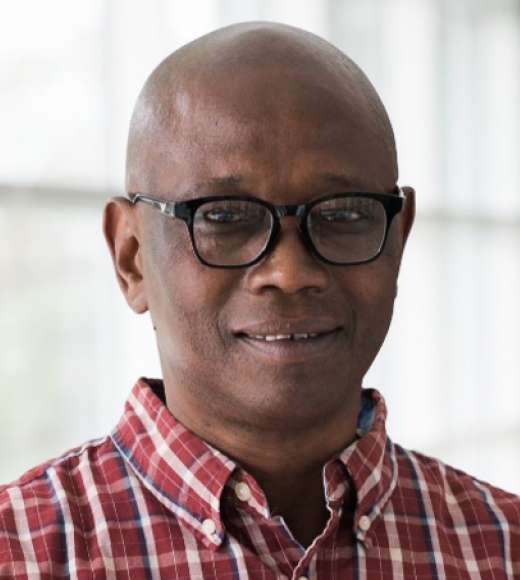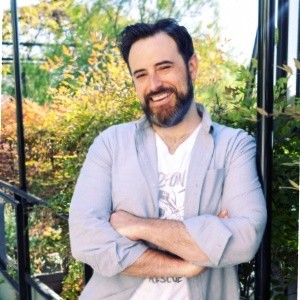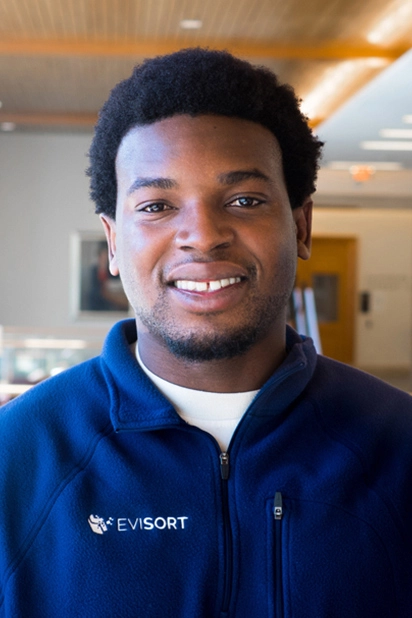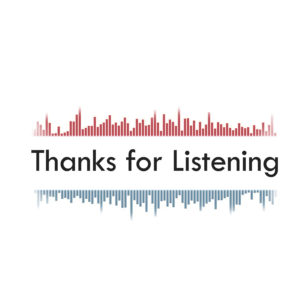
Welcome to the seventh episode of our podcast, Thanks for Listening!
This episode explores the challenges inherent in online political engagement. While some of us may have had positive experiences connecting with others around political issues online, we also have seen online spaces become unhelpful, potentially harmful echo chambers for what we already believe, rather than sites for learning from those who see the world differently. With more social interaction moving into the virtual world as we weather Covid-19, these challenges are even more urgent. What role does social media play in perpetuating or even amplifying divides? Is there hope for a richer, healthier form of online political dialogue?
Our guest on this episode is an expert in the field of digital media and learning. Professor Andres Lombana-Bermudez explains some of the technological and sociological factors that amplify polarization on social media, and also shares an example of a social media platform that it is proving that online communities actually can work together to foster constructive dialogue and engagement.
![]()
Thanks for Listening is a podcast tracking efforts to bridge the political divide in the U.S. through dialogue and collaborative processes and spotlighting the important and often courageous work of individuals and organizations who are helping citizens engage with one another on challenging topics. We hope that through the everyday examples of ordinary and extraordinary people all over the country, listeners will find optimism that we can—and are—moving beyond partisan divides, as well as inspiration to become part of the solution. This podcast is made possible with a grant from the American Arbitration Association International Centre for Dispute Resolution Foundation.
Hosts

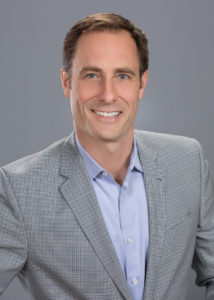

Sara del Nido Budish Neil McGaraghan Kate Ellis
Host Host Producer
Guest & Resources

Andres Lombana-Bermudez is a researcher, designer, and digital strategist working at the intersection of digital technology, youth, citizenship, and learning. His approach is transdisciplinary and collaborative, combining ethnographic and quantitative research methods, design-based research, and co-design. He is an assistant professor of communication at Universidad Javeriana in Bogota, Colombia, an associate researcher at the Centro de Internet y Sociedad de la Universidad del Rosario (ISUR) and a faculty associate at Harvard University’s Berkman Klein Center for Internet and Society.
Andres has worked in the field of digital media and learning for over a decade and collaborated in projects such as the Digital Edge, Berkman Klein’s Youth and Media Lab, the New Media Literacies Project, and Clubes de Ciencia-Colombia. He is particularly interested in researching digital inequalities, ICT policy/governance, media ecosystems, disinformation, and designing for learning, fun and engagement. He blogs regularly and contributes to Global Voices with articles about citizen media and peace-building in Colombia, his home country.
Andres has a doctorate in Media Studies from UT-Austin with concentration in digital literacy and education, a masters in Comparative Media Studies from MIT, and bachelor’s degrees in Political Science and Literature from Universidad de los Andes in Bogota, Colombia. Follow Professor Lombana-Bermudez on Twitter at @vVvA.
Other resources:
On the Media: “Restoring Justice Online”
Transcript
Sara del Nido Budish [00:00:10] From the Harvard Negotiation and Mediation Clinical Program at Harvard Law School, I’m Sara Del Nido Budish.
Neil McGaraghan [00:00:15] And I’m Neil McGaraghan. This is Thanks for Listening, a podcast about bridging the political divide in America. On this episode, we’re going to take a look at social media and the role that social media can play in amplifying or perpetuating partisan divides that we feel in our everyday lives, whether that’s on campus, in our home town, at work, sometimes even in our own families. And it feels to us particularly timely. As we’re recording, the COVID-19 virus is dramatically changing daily life in this country and around the globe. And in addition to the very real and direct health effects and loss of life that are being felt by so many people and the anxiety and stress and grief that go along with it, a lot of us are also struggling just with the day to day effect of sheltering–in–place and social distancing and isolation. So out of necessity, a lot of people are turning more completely, more fully, toward the internet and its many and varied virtual platforms for helping people stay connected, whether that’s for work or socially. And so it struck us that digging into the subject of online divides might be even more pressing now than ever.
Sara [00:01:21] As you’ll hear from our guests on today’s episode, a downside of social media is the way it can amplify our natural tendencies to sort ourselves into groups of like-minded people, and listeners are probably quite familiar with this. And you’ll hear a lot more about it in today’s episode. And as COVID-19 drives us increasingly to virtual platforms, these concerns become even more urgent. Will the echo chambers that social media tends to foster become more pronounced? Or does the reality of engaging even more with each other online create opportunities to defeat that echo chamber effect? And if so, how do we do that? In this episode we’ll be starting to take on these very big questions. With our guests, we take a look at some of the conditions that have enabled social media to emphasize divides leading up to the present moment and a promising project involving youth and social media.
Neil [00:02:06] And just a couple quick notes about this episode. As you can probably hear, we’re recording this part of the show from outside of our usual spots in the studio. But as so many people are doing these days, Sara and I are recording this part of the show from our respective homes. For the interview you’re about to hear excerpts of, we were actually in the studio and our guest joined us by Zoom. So that part will sound familiar to listeners, but you’ll also be able to tell. You’ll notice Sara and I are going to be jumping back and forth between that recorded interview and this segment that we’re recording from our homes.
Sara [00:02:37] So without further ado, our guest in this episode is a researcher, designer and digital strategist who studies online dialogue and digital communication. Andres Lombana-Bermudez is a Professor of Communication at Javeriana University, a Research Associate at the Rosario University’s Center for Internet and Society, and a Faculty Associate at the Berkman Klein Center for Internet and Society at Harvard Law School. He’s currently based in Bogotá, Colombia where he teaches and researches, among other things, youth, media practice and literacies and digital inclusion.
Andres Lombana-Bermudez [00:03:06] Well, thank you for the invitation Neil and Sara. I am glad to be a part of this podcast and share some of my research and opinions and hopes and criticisms of social media platforms.
Sara [00:03:21] Yes, I want to dive into all of those things. So I guess just to start with, kind of walk us back, what makes it challenging to engage in constructive dialogue on social media? Because I mean, it’s hard, right, in any realm of life. It can be hard to talk about politics. How does social media contribute to that difficulty and contribute to polarization?
Andres [00:03:43] Yes. Just to start with a kind of brief notion of social media, it’s important to know that these spaces are complex social-technical systems that are not only mediated by technology, but also by humans. So it’s a complex interaction that humans and technology are creating. And as they create these spaces for dialogue, for sharing information, for sharing content, there are some dynamics that emerge. Just by the way that social dynamics emerge in real life, in communities, in these spaces online those dynamics also emerge. And some of those dynamics are precisely the ones related to polarization, to tribalism, to a kind of fragmentation. And those dynamics are embedded in human nature and human communities. So social media, they create these spaces mediated with technology. Some of the features of technology emphasize or have affordances that make people to become engaged in dialogues that are a little bit fragmented. And, for instance, there are like social phenomena that have been studied by sociologists, for instance, called homophily, where communities that have the same beliefs, the same values, get together and they become not as diverse as we want for productive dialogue. They become more homogenous. And when these spaces start to interact and share only one point of view and share only one kind of values, they can certainly promote certain kind of a polarized views, and sometimes can even become radicalized views because the dynamics that emerge here encourage, like, the sharing of the same kind of information, or the sharing of the same kind of points of view.
Neil [00:05:54] And that sounds Andres like a dynamic that, maybe as one of these that you’re talking about, is more human nature rather than simply limited to social media.
Andres [00:06:04] Exactly. And that’s something that we have to take into account. We cannot blame just technology for what is going on in the current political environment and political dialogue. But somehow the way that the evolution of this complex social-technical system has happened has created a certain kind of, I would call it, they have amplified somehow the fragmentation and the polarization. But it’s something that is in human nature. And as technology evolves and as humans also start to use the technology, they have somehow pushed those affordances and those technological features to a point where people have started to talk about like echo chambers, for instance, and these phenomena that happen in these social-technical systems when you only have one group of people sharing certain kind of information, certain kind of points of view, certain kind of speech. And as you become more homogenous in the dialogue that you have and you only start to hear one point of view so it’s also easier to become more radicalized and more extreme in the kinds of opinions that you have.
Neil [00:07:37] Well, you talked about amplification too, Andres.
Andres [00:07:40] Yes.
Neil [00:07:40] And I think that something a lot of us have felt in digital platforms and observed ourselves or at least it feels amplified. Is there something about the digital platform itself that takes this phenomenon, you’re talking about echo chambers, of course, we’re familiar with that term and it’s been, I think we’ve experienced them a lot of us anyway. Why does it feel more pronounced or amplified in a digital forum or format or social media? What is it about that the digital landscape that makes it so amplified?
Andres [00:08:15] So because the way that the social media platforms evolved based on network and network computers, right, and now also network phones because our phones have computers inside, it privileges certain kind of dynamics for spreading information in a network way. Before in the past when we have like the printing press or radio or film or television, the model of communication was based on broadcast model. And it was one central station broadcasting to many. And with the social media ecosystem and these social-technical systems based on the Internet, what we have is a model of many-to-many broadcasters, let’s say, where anybody can create a message, can modify a picture, can share a video, and it can share it to many users that are connected to their networks. So it’s the network effect that the current Internet, and social media that are on the top of the Internet, create allows for an amplification that was not possible before. So today a post of a everyday person, an ordinary women or ordinary men, can reach millions of people just by the dynamics of this network effect. So it’s easier to distribute the message, to amplify it, and to also allow reshares. Recirculation is way wider than before.
Sara [00:09:57] Yeah, the many-to-many thing is interesting. It’s an interesting way to capture it. And that kind of gets to my next question, which was going to be, sort of, why social media and digital platforms have such a big impact? Because if we think about something like Twitter or Facebook, not that those are the only social media platforms, but, you know, only a portion of the population is on those platforms. It’s not like every person who has an interest in or is engaged in politics is a member. And what I hear you saying is that this network effect is one of the reasons why those platforms have such a disproportionate impact.
Andres [00:10:30] Definitely. The network effects occur at many levels now, because also the social media platforms are also embedded in a wider, kind of, media ecosystem, right? Where we have not only social media isolated from television or radio or cinema or television. Right? They work together and those older media are also involved in the new social media dynamics. So what is interesting in that regard, that even if not everybody is on social media, even in countries where there is a lot of detailed divides regarding Internet connectivity, we see the effects of the network effect and the effects of the social media amplification. It’s because what is discussed in these spaces, in these online spaces, is also being picked and somehow shaping the agenda that is being developed in newspapers, in television channels, in magazines, and even in film. So the ecosystem is way wider than social media, but social media are very vibrant in the way that they discuss the topics. There is a lot of, also, like some part of the success of the social media is the way that they can measure engagement, something that has really driven the development of these platforms and their economic success. Digital economy and the attention economy are based on these trends that can be monitored in real time, can be analyzed by algorithms, and they can also be stored and analyzed later.
Sara [00:12:30] So Neil, stepping back from the interview for a minute, Andres is describing a really intricate sort of fabric that social media feeds into that touches on social, political, and economic factors. We already naturally sort ourselves into tribes and this tendency is amplified by the ability to use social media to very easily and very quickly seek out more like-minded people. We can, in effect, grow and strengthen our tribes in ways that we couldn’t before the Internet economy. And by growing more dependent on our online tribe, I wonder if we insulate ourselves more and more from the real people around us who might offer different perspectives and different ideas, different backgrounds, views. And there’s also a structural piece here too, right. The media platforms depend on clicks for their advertising revenue, so they have a commercial interest in tracking and measuring user engagement.
Neil [00:13:14] Right. And then when you factor on top of that, the traditional media actually pick up and distribute social media posts and content. And, you know, think of the celebrity Twitter feed that gets picked up and becomes covered news somehow or the president‘s Twitter feed getting reprinted directly in the mainstream media so that even people who aren’t on social media themselves are exposed to the content that comes from social media. And sometimes it’s quite polarized. And to take just one example that’s in the news currently, The New York Times has been running a story about how Dr. Anthony Fauci, who’s a key member of the White House’s coronavirus task force, has become what the paper calls “a target of the far right” who faces a torrent of claims that he’s part of a conspiracy to undermine the president. And the article then goes on to link this torrent to a handful of Twitter and Facebook accounts and describes some of the posts as being shared hundreds of times and liked by thousands. And this is not to judge one way or another the significance of the posts or their importance or relevance. But to say that by any measure . . . what they’re talking about is a very small corner of the Internet where those opinions resided and then boom, you know, it gets covered by The New York Times and it instantly has an international distribution on a mainstream platform.
Sara [00:14:32] Right. So this example makes it easy to see how traditional media are part of this media ecosystem that pulls in and amplifies partisan social media. And it’s effectively a double dose of partisanship, actually, because not only does an opinion get lifted from relative obscurity to national prominence, it also gets portrayed in a way that conjures up a clear image of the enemy, further driving kind of a wedge. Some of the major platforms are actually experimenting with small steps, tweaks around the edges, to address this problem of hyper-polarization. So, for instance, Facebook added multiple emoticons to augment the pure like-based model. Instagram has moved away from likes altogether. Facebook and Twitter have policies that seek to bar user anonymity, so query how effective any of that has been at reducing polarization. However, there have been some efforts focused on user education and also even alternative social media platforms that may offer some hope that it’s possible to depolarize social media and make it constructive. Here’s Andres again.
Andres [00:15:30] More towards the educational side, these platforms are also doing a lot of efforts trying to educate their users and their publics. Because we haven’t mentioned but the issue of the human education, or whatever we have learned, is also crucial for the interaction and for the formation of echo chambers. If platforms try to educate their users to kind of socialize community guidelines, ethics, and make people aware of the impact that whatever they are doing there that can have in society can also help. So there is a lot of initiatives taken on those platforms to socialize the community guidelines, to make clear kind of not only terms of services, but more like on the side of the norms, community norms that are developed on social media. At the end these social media are kind of live communities and public. So that also is related to the education and the values and the ethics that users have when they interact there. There is also a human, the human activity, in the equation of social media and echo chambers. It’s important.
Sara [00:16:47] Yeah, I mean the notion of community guidelines and norms certainly resonates with what we’ve talked about on this podcast before in terms of live spaces and how you set norms for live spaces and what some of those norms might be. So tell us more about that. And in particular, we know you’ve done a lot of work with one particular platform called Scratch, which is meant for children and youth. And, you know, the notion of children and youth engaging online might strike, like, some parents as quite scary. But this is actually turned out to be a really great and safe space for children. So tell us about the platform and kind of how it works.
Andres [00:17:24] Yes. In the research that I have done in the U.S., particularly when I was doing my post-doc at the Berkman Klein Center for Internet and Society at Harvard, I was part of this project called Coding for All. And it was a collaboration between the Media Lab, the Berkman Klein Center, and the Digital Media Learning Hub at University of California, Irvine. And we were studying some of these youth-driven platforms who are creating innovative approaches to community–making, to community guidelines, to moderation and to the overall governance of online spaces. So among these platforms I had the opportunity to do a study, Scratch. This platform developed in the Media Lab started in 2017 and it has grown to have millions of users, millions of kids, around the world who engage in the production of videos, games, interactive multimedia, projects, and also commenting to each other. So it’s a platform where people can post whatever they create, they can circulate it, they can remix it, and they can comment on to each other’s projects. This platform is kind of exemplary in the way that it has empowered youth and it has provided a lot of agency to them. Of course, this topic of youth empowerment and agency online and on social media is controversial because, as you mentioned Sara, there are like two perspectives on it. One is that online spaces are very dangerous, full of cyber bullying and harassment and, you know, like predators. So it’s better that the youth don’t engage there. That’s one notion. And parents have good reasons to worry about what their children are doing online. But there is also another kind of perspective, an approach, that is oh no, the social media spaces and the internet spaces are empowering youth and encouraging them to exercise their agency and to create, to communicate, to socialize, to organize, to build communities. And this platform, Scratch, is on that side of the spectrum that is very positive and very hopeful about what youth can do online. And particularly so this platform also grew fast. As I just mentioned, they reach millions of users around the world. They also confronted a lot of the problems that emerge on these online spaces and online communities. But they have designed and experimented with a governance structure that has allowed them to thrive and to create a space that is safe, that is kind, that is generative, where youth can empower themselves and develop projects, talk to each other, and even discuss different kinds of topics. Topics that are kind of tough sometimes as diversity, sexual orientation, religion in a way that is productive and positive.
Neil [00:20:57] And can I just ask a question, is part of the way they’ve been able to make that possible by establishing community norms, community guidelines for users to live by and maybe sort of patrol their own speech, but also sort of patrol the way and, I don’t know, pay attention to the way others are engaging on the space?
Andres [00:21:21] Exactly. That’s part of what they have done.
Neil [00:21:24] And how, so if you can speak to it in your research, are you able to tell how they made it successful? Because it sounds like a great idea, but with millions of users, for example, how does the project approach the problem of getting buy-in from people and making those community norms meaningful?
Andres [00:21:45] Yes. So it’s a combination of things, right? On the one hand is, of course, the community guidelines that they have created. And not only created community guidelines, but also supporting community engagement through the adoption and championing of those clear core values. That’s one side. The other side is establishing a moderation scheme in which both adult moderators and community members actively monitor the platform with the help of automated software filters. So here we see an example of how the problem of social media polarization can be solved. And why it’s hope. It’s because if you develop strategies that kind of intervene the technical aspects of the system, the technical affordances, and combine them with the building of a community that is based on clear guidelines and promote the users to promote those guidelines, to engage them, to actually believe in them, then you can create a healthy community. Of course, this is a huge effort. You need a team of many moderators. Actually, I’ll just tell you that the moderation in the English-speaking community of Scratch, they have other languages as well but I didn’t study them. And for instance, they have sixteen moderators.
Neil [00:23:21] Did you say sixteen?
Andres [00:23:21] Sixteen. Yeah. Who are actively monitoring the conversations, the projects that are posted on the platform. They also have a technical system that automatically detects language, inappropriate language, or inappropriate projects, and flags them so they can also see the reports from the automated system. These moderators. And they can also, like, see the reports from the users because the users can also flag projects and flag content that violates the community guidelines. When they see that, they take different approaches to talk with the users who are not following the community guidelines. They talk to each other. They try to kind of engage in dialogue. First of all, they mention the community guidelines, they send reminders about them, they ask questions about are you following the community guidelines and so forth. And if the users continue to violate the norms, then they will ban it. But first they try to dialogue with, with the user, and come to terms and explain. Maybe it’s worth mentioning that also these guidelines that they have designed are short. They are not like terms of service that it takes hours to …
Sara [00:24:54] You scroll through and then hit accept.
Andres [00:24:54] Yeah. Exactly. It is not like that. It’s very simple. They have six simple, or not simple, but short guiding principles. One is to be respectful. Other one is to be constructive. Other one is to share. Other one is to keep personal information private. Other one is to be honest. And the sixth is to help keep this site friendly. So, for instance, this issue of friendship is very important for the community there. They also include, for instance, something in their community guidelines that is called a kind of a statement of purpose of Scratch. That is that Scratch welcomes people of all ages, races, ethnicities, religions, abilities, sexual orientation and gender identities. So as you can see, they are like short, easy to understand for children or youth. And they have been, through this other strategy of engaging the community in kind of the adoption of the guidelines, become kind of internalized by the community. So you see many of the projects, videos, games, audio-visual multimedia presentations that these kids and children are posting on the platform are about the community guidelines. So they are talking about the community guidelines inside the community. It’s not only like something that is just like guidelines in marble, right, that you read. But they also appropriate them. They use it in their projects. And it needs to be something that is part of their everyday activities there.
Sara [00:26:40] So Neil, if you go to scratch, if you visit the site, it’s really cool. You’ll see products about everything from sexual orientation to religion to, now, COVID-19. This is a site where young people, primarily ages 8 through 16, can learn to code and code interactive stories, games, and animations about topics that are important to them and then share them with one another and comment on each other’s work. So it is social media in kind of a broader sense. People use their creations as the vehicles to engage about a huge variety of topics. So they’re creating these individual pieces that they share with one another and they’re also creating a community. The users of the platform take so much responsibility for making it work. As Andres described it, there’s a sense of ownership there that’s really critical to building the Scratch community. There’s a shared investment in, a shared responsibility for the community guidelines, both in talking about them and also in upholding them and in enforcing them.
Neil [00:27:31] Yeah, that’s right. And Andres shared with us a really interesting story about how at one point a number of Scratch community members were actually trying to game the system to have their posts be the most visible and to attract the most visits and be the most popular. And the moderators and other community members were actually able to intervene, relying on the community norms that they had developed to help ensure a diversity of projects being showcased on the home page. So by doing that, they were able to really further cement the core value that they were trying to build together, of welcoming a variety of views without letting one view or a few views dominate the space. Now, that required actual interventions from real people rather than simply relying on algorithms. So it’s time-consuming and really labor-intensive work, but it shows, for one thing, that it’s possible to accomplish, but also that there is power in creating a social media platform in which the members themselves are not only empowered to, but actually do take responsibility for what they create and for what they’re building together. And in a way, it reminds me of what we learned from Ben Fink about Roadside Theater in Episode 4. When people create together, when they build something together, they’re capable, they’re able to break down the barriers and divides that exist between them.
Sara [00:28:51] Yeah. And, of course, this also touches on what we learned in Episode 2 of this podcast about the teenagers who are part of the “Can We?” Project in Maine. Young people have so much to contribute in creating space for productive dialogue. And also, it’s just such a rich time in their own lives to be learning to engage with other people about life in general and particularly difficult subjects.
Neil [00:29:11] OK. So for listeners who want to learn more about Scratch, the website is scratch.mit.edu. Andres also told us about a similar youth-oriented site called DIY.org, which is worth checking out for people who are interested in what alternative forms of social media and social media platforms can provide that offer maybe a more hopeful or productive form of engaging online. And of course, there’s plenty happening online that’s targeted more at adults too. Our first episode we interviewed guests from an organization called Living Room Conversations. And Living Room Conversations has been offering for some time a platform that allows people to connect virtually from anywhere in the world to continue discussing challenging social issues and policy. And that’s something that feels especially important now as people are trying to maintain community and connection through a time of physical distancing, but want to be able to still talk about the issues that matter most to them.
Sara [00:30:04] And this might be a good segue to a brief word about our next episode, which will focus on the work that coalitions can do and are doing to promote opportunities to bridge divides. One of the near-term projects that we’ll hear about is an effort to design a national week of conversation. It was slated to include mostly live events all over the country during the second week of April and now plans are being made to migrate the entire event online. So it’ll be a fascinating look at not only the power of coalitions, but also some of what we talked about today: thinking of new ways for people to engage online and use technology and social media for good and for bridge-building instead of as sources of division.
As we round out the 10-episode series in our podcast on political divides in America, we’re still really interested in hearing from you with your thoughts and questions. Reach out to us if you know of an individual or group who’s working to bridge the divide. Send us an email at [email protected] or find us on Twitter @HNMCP. We’d love to hear from you.
Neil [00:31:13] We are grateful for the help and support of our colleagues at the Harvard Negotiation and Mediation Clinical Program, especially Tracy Blanchard and Bria Etienne.
Sara [00:31:21] Thank you to Kate Ellis, our producer, and to the folks at the Harvard Media Production Center where we do our recording. Theme music is made available to us courtesy of Blue Dot Sessions, and this podcast was made possible by a grant from the American Arbitration Association’s International Center for Dispute Resolution Foundation.
Neil [00:31:37] You’ll hear us again soon on our next episode.
Sara [00:31:40] Thanks for listening.
Neil [00:31:41] Yup. Thanks for listening.


